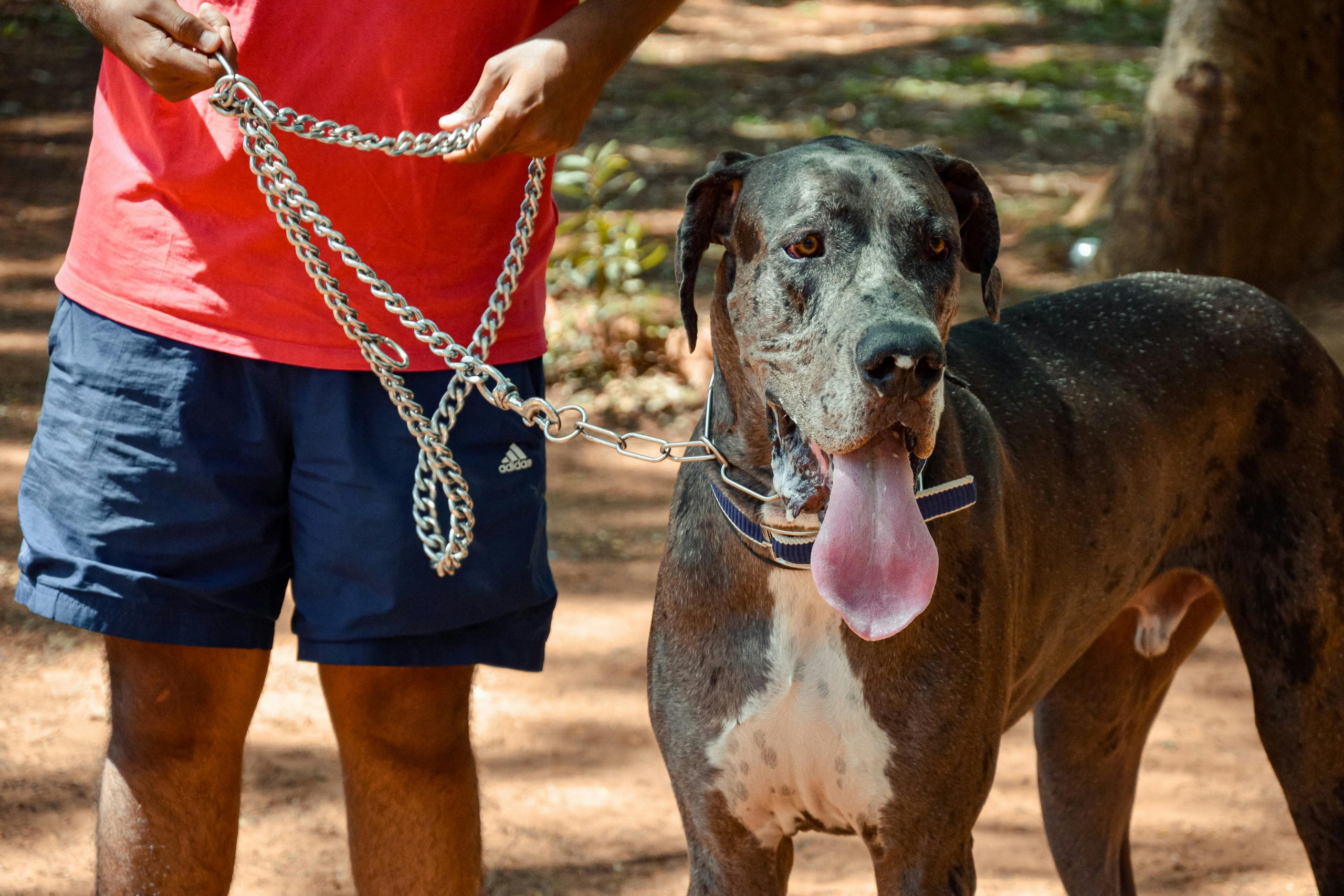Great Danes, known for their imposing stature and gentle demeanor, are one of the largest dog breeds in the world, often referred to as the “gentle giants” of the dog community. Originating in Germany, they were initially bred for hunting wild boar and guard estates, but today, they are beloved family pets, prized for their affectionate nature and calm temperament. Despite their size, Great Danes are surprisingly graceful and carry themselves with an elegant poise that belies their strength. Alongside their well-known characteristics, Great Danes exhibit a range of unusual habits that can be both amusing and baffling to their owners. These behaviors reflect their unique physiological makeup and historical roles. This article will explore seven of the most unusual habits of Great Danes, offering insights into the reasons behind each behavior and how owners can effectively manage and appreciate these quirks.

1. Leaning on People
One of the most endearing yet unusual habits of Great Danes is their tendency to lean against their owners or people they are fond of. This behavior is a sign of affection and trust, showing their desire to be close to their human companions. Despite their large size, which can make this leaning quite overwhelming, it demonstrates their inherent need for physical contact and reassurance. Owners should be prepared for this show of affection and provide positive reinforcement to ensure that it remains gentle and does not become overpowering, especially around children or the elderly.
2. “Sitting” on Couches Like Humans
Great Danes often choose to sit on couches with their hind legs spread out and their back against the backrest, much like a human. This unusual sitting position is partly due to their size, which makes typical sitting positions uncomfortable for long periods. This habit also reflects their social nature and desire to be part of the family, joining in on common areas like any other family member. Providing a durable, size-appropriate dog bed can offer an alternative, though many Dane owners find joy and humor in sharing their living space in such a unique way.
3. Fear of Water
Despite their bold appearance, many Great Danes exhibit an unusual fear of water, which can include reluctance to go near pools, large puddles, or baths. This behavior may seem ironic given their size and strength, but it highlights their sensitivity and cautious nature. Overcoming this fear requires patience and gentle encouragement from owners. Introducing water activities slowly and in a controlled manner can help build confidence and reduce anxiety associated with water.
4. Extreme Couch Potato Behavior
Great Danes are known for their surprisingly low energy levels despite their large size, often displaying what can only be described as extreme couch potato behavior. They enjoy lounging for hours and can often be found taking up considerable real estate on sofas or beds. While it’s important to accommodate their need for rest, especially as they grow older and their joints become more prone to issues, it’s also essential to maintain a regular exercise regimen to keep them healthy and prevent obesity.
5. Chasing Their Tails
Tail-chasing can be a humorous sight with Great Danes, given their large size and the amount of space they need to perform this quirky habit. While often playful and harmless, if this behavior becomes frequent or obsessive, it might indicate boredom or stress. Providing ample physical exercise and mental stimulation can help mitigate these bouts of tail-chasing, ensuring that your Great Dane remains both physically and mentally healthy.
6. Eating Non-Food Items
Great Danes sometimes develop a habit of eating non-food items, a behavior known as pica. This can include anything from socks to plastic items, and it can be dangerous if the ingested materials cause intestinal blockages. Monitoring your Dane’s environment for potential hazards and ensuring they receive adequate nutrients from their diet can help curb this behavior. Regular veterinary check-ups and behavioral training can also assist in managing and preventing pica.
7. Guarding Their Family or Territory
Despite their friendly nature, Great Danes can be formidable guardians. They often develop a strong protective instinct over their family and territory. This behavior stems from their historical role as estate guards. Proper socialization and training are crucial to ensure that this protective instinct does not lead to aggressive behavior. Teaching them to respond appropriately to visitors and unfamiliar situations can help them understand when protection is really needed.
Learn More About the Great Dane Dog Breed: Information, Facts & Pictures
Great Danes, with their mix of majestic size and gentle behavior, possess a set of unusual habits that endear them to their families but also require understanding and management. These habits, from leaning affectionately on their owners to their sometimes surprising fear of water, highlight the unique personality and needs of this breed. By acknowledging and appropriately managing these behaviors, owners can ensure that their Great Danes lead fulfilling, well-adjusted, and healthy lives.
 Toledo, United States.
Toledo, United States.
